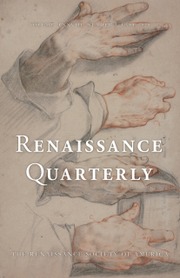Jessica Rosenberg’s Botanical Poetics exfoliates the sundry delights of plants, demonstrating in a meticulous yet wide-ranging manner the ways they inspired and shaped literary practices in sixteenth-century England. Rosenberg defines botanical poetics as “a theory and practice of inscription that understands books’ material form and possible futures on the model of vegetable life.” The “genius” of the vegetable, as she elaborates, “is its potential, in only fragments, for relocation and resumption of new life” (3). That such vitality could be extracted without diminishing the “original stock” was one of the primary “vertues” attributed to plants and books alike in the period, Rosenberg argues, illustrating how this kinship is expressed in an aesthetics that straddles openness and constraint, routine and error, expectation and surprise.
Rosenberg advances this argument in five dedicated chapters and two “branches.” The introduction offers a simultaneously vast and detailed survey of sixteenth-century English “plant books,” a genre Rosenberg defines as books whose “titles link them to the world of plants” (9). These include prayer books, epigrams, translations, and miscellanies whose composite forms especially evoke vegetable gatherings. Titles advertise themselves as “arbors,” “flowers,” “bowers,” and “nosegays”—commodities that offer “consumable delights,” but ones filled with “a prodigious potential for dispersal and regeneration” (15). Rosenberg’s expertise in book studies is impressively displayed in her analysis of printed ornaments and sammelbands in chapter 1, where she establishes a central concern with aesthetic contingency in gardens physical and literary. Inspired by the “lexicon of virtue across plant books” (30), wherein the word (as in the period) is typically spelled “vertue,” chapter 2 asks “what changes if we see…the turn of the e instead of the masculine uprightness of the I”? The former spelling, Rosenberg asserts, is associated more with a dynamic, trans-speciate, nongendered vitality than the manliness that takes precedence in Roman tradition and spelling. In botanical “vertue,” Rosenberg discovers a “more ecological view of the cosmos…that places human artisans in positions of interactive dependence, subject to the rhythms and patterns of nonhuman capacities” (84). Branching off this chapter is a formidable if brief meditation on the “ecology of small forms” in Romeo and Juliet. Exquisite close readings (of Queen Mab, the “mickle grace” of herbs, the pun, the couplet) magnify the “rhythms of dormancy and consequence that mark the play of contingency on” an “(un)remarkable scale” in this tragedy (113).
Chapters 3 and 4 reveal unexpected patterns of the gendered risks and rewards in miscellanies by young men of the Inns of Court and in Isabella Whitney’s Sweet Nosegay, respectively. Rosenberg shows how young male poets imagine themselves as “slips” more vulnerable to speculative circulation than Whitney, for whom cosmic and urban dissolution offer unique possibilities for literary and spiritual posterity. In the final chapter, Rosenberg, an ingenious reader of miniature and condensed forms, probes the “alliance between agricultural labor and rhetorical condensation” to show how the English sonnet functions as a “finite engin[e] of anticipation” (221–22). Her near surgical analysis of the sonnet’s “compact portability” (226) as an adaptation out of husbandry manuals—and the final couplet as a particularly pointed example of such borrowing, particularly from Tusser’s Hundreth Pointes—provides a novel approach to the themes and formal play of time, posterity, decay, and disappointment in Shakespeare’s Sonnets. The chapter’s intricate compression of argument and theme is itself punctured by couplet-like phrasings of aphoristic observation that sparkle with Rosenberg’s wit and eloquence.
My two minor qualms with the book cancel each other out. Rosenberg seems to champion the plant books’ warnings against a “hermeneutics of extirpation” that she brilliantly exposes, and yet Rosenberg’s own readings, exquisite as they are, veer toward an exhaustiveness that sometimes seems at odds with this admonition, until one is reminded of the near infinite possibilities of small forms that open under closer and closer view. Similarly, Rosenberg’s ingenious attention to the miniscule seems to defy the macroscopic gestures of intellectual history. The gems in this book are bountiful and dispersed in ways that imitate their subjects, demanding, and amply rewarding, slow and careful reading so that they are discovered in situ where they bloom rather than by grand display. This serendipity offsets the carefully manicured structure of the book and a prose style both dense and tight, not unlike the garden knots and plots of her analysis. Rosenberg has written a book whose most formidable features flatter those she so deftly analyzes in a study that will delight and instruct readers of early modern poetry and botanical literature for whom it will, happily, become a standard.


